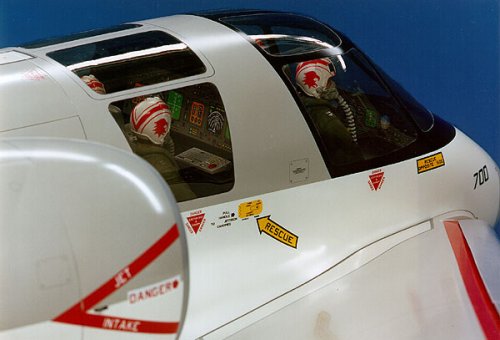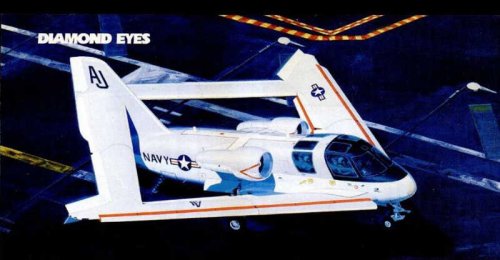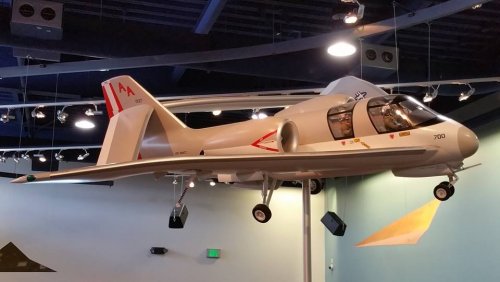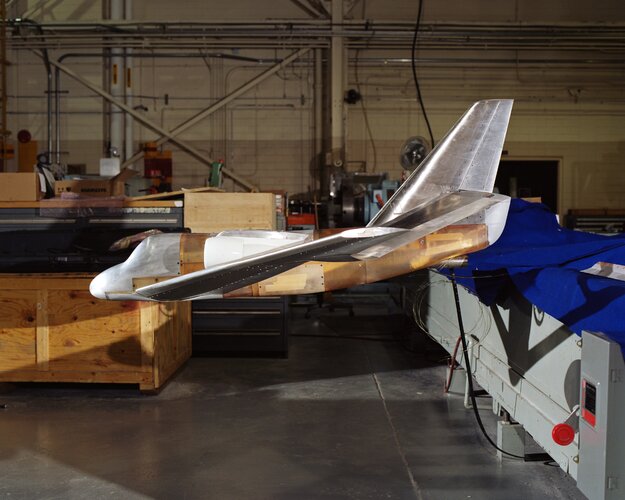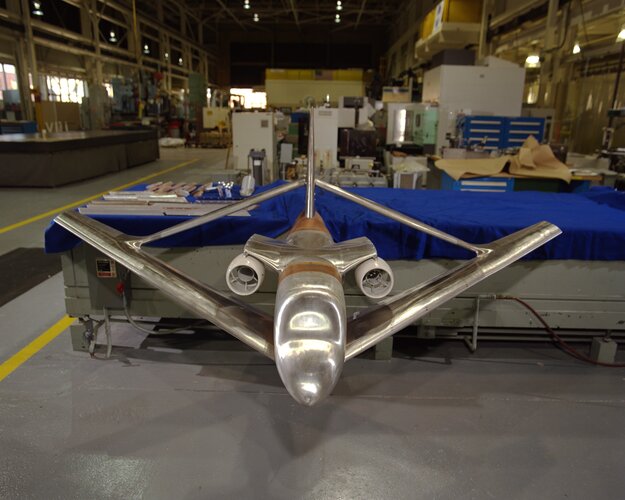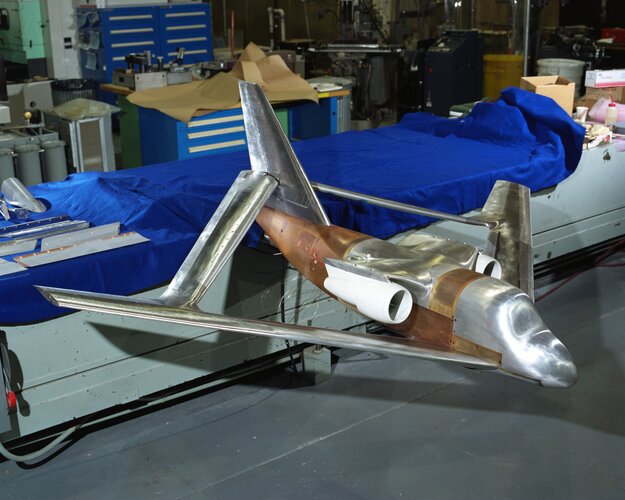Aviation Week & Space Technology , November 20, 1992, Pages 62 & 63
Boeing Pursues Innovatitive Concept for Future Navy EX
By Breck W. Henderson/seattle
WHAT IS BELOW IS MY SUMMARY OF ABOVE ARTICLE - Any mistakes are my own and not the original author.
Boeing Military Airplanes early concept of replacement for Grumman E-2C Hawkeye.
Dubbed the EX it is designed around an innovative & unusual, joined-wing airframe, the joined
wing surface also mounts AESA with a huge effective area giving 360-deg. view and imroved
detect range.
Earlier The Advanced Tactical Support Aircraft (ATSA) to replace the E-2C, S-3 ASW and EA-6B cancelled for lack of funding.
Boeing built/tested 1/5th scale radar model.
Boeing verified aircrafts landing charatistics via wind tunnel tests.
design of s3 alternative features a l-band AESA in a triangular radome, texas instruments
designed.
EX additional missions, strike support, intel gathering, Aera defece vs cruise missiles &
theatre ballistic missile defence.
additional possible sensors include:
-Shared AESA rada, mounted on leading edges for L, S & C bands for passive, bistatic mode; ESM, elint & signit; ECM; multiple commo links like to Aegis for fire control; nav & Iff modes.
-nose x-band for search & rescue, precision tracking & illumination for Surfa-2-Air seekers.
infra-red IRST, as on E-2 for precision tracking.
-ESM operating in HF thru K bands, providing ESM info.
-primary, UHF radar antenna area of 600 sq.ft operating in UHF band (300-600 MHz), resulting
in ranges 2.5 times that of E-2.
-Radiates to 160 kw. UHF detect target with 1 sq. meter cross sectioon at 400-600 mi. Smaller
at 175-250 naut. mi., cruise missile types targets at 6ft at 125-150 naut. mi. Scud type at
400-600 naut. mi.
Specs:
Gross Weight = 55200 lbs
operating weight = 35380 lbs
length = 51 ft-2 in
height = 18 ft-6 in
wing span = 63 ft-4 in (29 ft-1in folded)
wing area = 845 sq ft
spot factor = 1.34 (F-18 reference)
TF34-400 Engines(SLST = 9,2t5 lbs each)
T700 GE-401 turboshaft enine for radar power (1690 eshp)
Loiter at Mach 0.38, sprint at Mach 0.76, cruise to a max range of 2.590 naut. mi.
LINE DRAWING PICTURE LATER
Boeing Pursues Innovatitive Concept for Future Navy EX
By Breck W. Henderson/seattle
WHAT IS BELOW IS MY SUMMARY OF ABOVE ARTICLE - Any mistakes are my own and not the original author.
Boeing Military Airplanes early concept of replacement for Grumman E-2C Hawkeye.
Dubbed the EX it is designed around an innovative & unusual, joined-wing airframe, the joined
wing surface also mounts AESA with a huge effective area giving 360-deg. view and imroved
detect range.
Earlier The Advanced Tactical Support Aircraft (ATSA) to replace the E-2C, S-3 ASW and EA-6B cancelled for lack of funding.
Boeing built/tested 1/5th scale radar model.
Boeing verified aircrafts landing charatistics via wind tunnel tests.
design of s3 alternative features a l-band AESA in a triangular radome, texas instruments
designed.
EX additional missions, strike support, intel gathering, Aera defece vs cruise missiles &
theatre ballistic missile defence.
additional possible sensors include:
-Shared AESA rada, mounted on leading edges for L, S & C bands for passive, bistatic mode; ESM, elint & signit; ECM; multiple commo links like to Aegis for fire control; nav & Iff modes.
-nose x-band for search & rescue, precision tracking & illumination for Surfa-2-Air seekers.
infra-red IRST, as on E-2 for precision tracking.
-ESM operating in HF thru K bands, providing ESM info.
-primary, UHF radar antenna area of 600 sq.ft operating in UHF band (300-600 MHz), resulting
in ranges 2.5 times that of E-2.
-Radiates to 160 kw. UHF detect target with 1 sq. meter cross sectioon at 400-600 mi. Smaller
at 175-250 naut. mi., cruise missile types targets at 6ft at 125-150 naut. mi. Scud type at
400-600 naut. mi.
Specs:
Gross Weight = 55200 lbs
operating weight = 35380 lbs
length = 51 ft-2 in
height = 18 ft-6 in
wing span = 63 ft-4 in (29 ft-1in folded)
wing area = 845 sq ft
spot factor = 1.34 (F-18 reference)
TF34-400 Engines(SLST = 9,2t5 lbs each)
T700 GE-401 turboshaft enine for radar power (1690 eshp)
Loiter at Mach 0.38, sprint at Mach 0.76, cruise to a max range of 2.590 naut. mi.
LINE DRAWING PICTURE LATER


